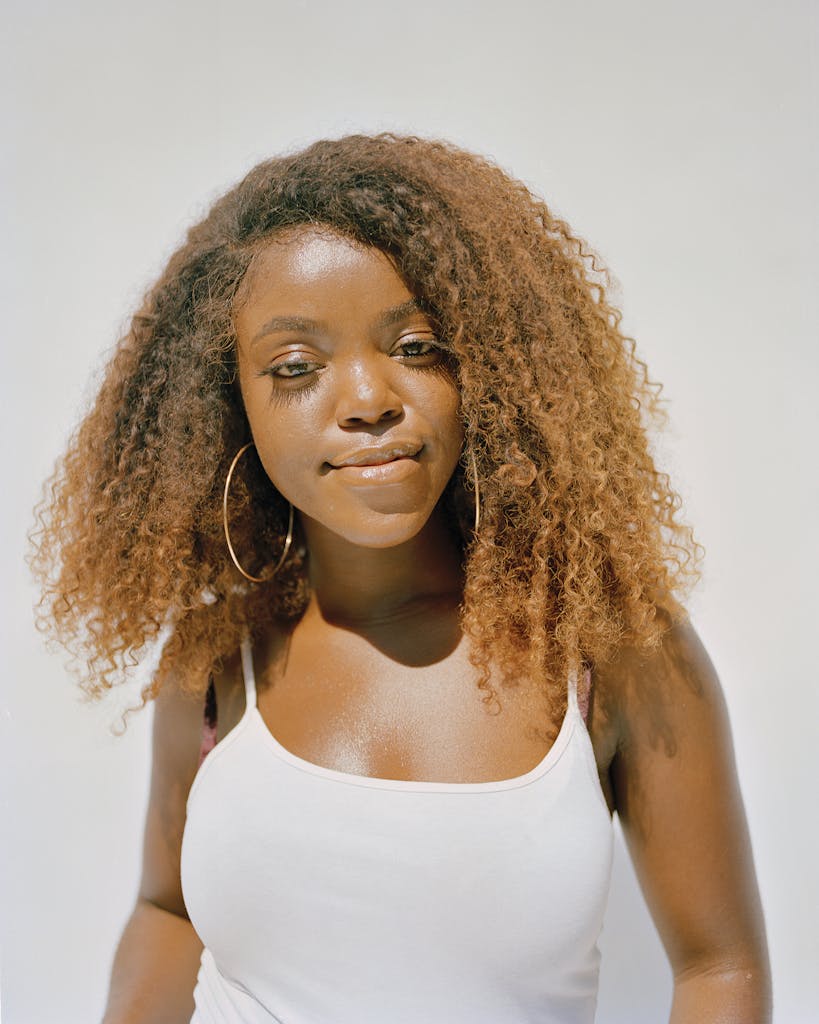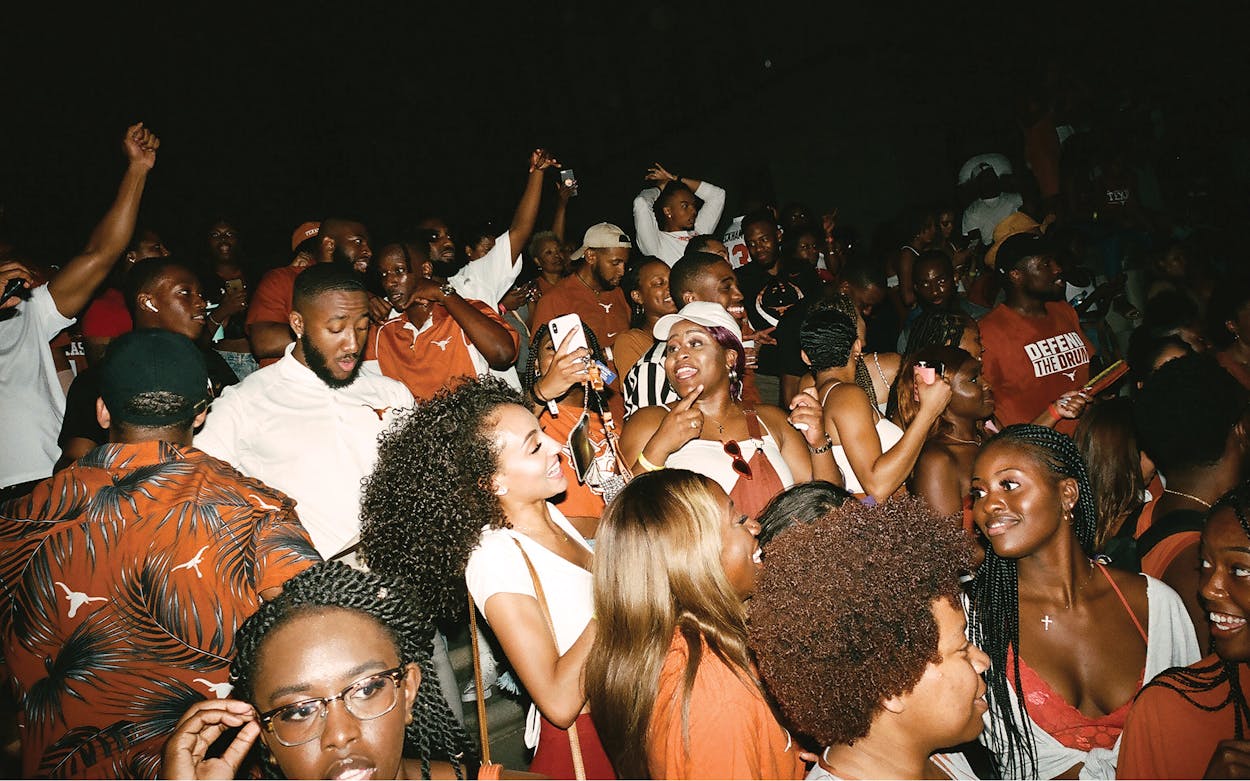I have always loved my hands. In their deftness, flexibility, and deep brown color, they represent my strength and totality. My freshman year of college, though, my love for them wavered. One afternoon in 2007, as I chowed down in a dining hall at Texas State University, a white student sitting at my table, Lauren, glanced over at me. Her eyes scanned their way up and down my body, finally settling on my hands. “Monkey paws!” she yelled out, laughing hysterically. My mouth dropped open.
Her words stung more than any insult that had been hurled at me over the years. Until then, I had considered her a friend. I took the time to patiently educate her, to tell her that her comment was racist; she replied simply that she didn’t know. She had grown up in Austin, a segregated city that is often touted for its progressive politics. Lauren didn’t have much experience being around Black people and no idea how to properly communicate with me, with us.
She and I drifted apart after that exchange, one of many microaggressions I experienced during my four years as an undergraduate at Texas State. By then I’d resorted to mental gymnastics as a means of persevering despite enduring a lifetime of attacks on my identity. When I was growing up in Seguin, fellow classmates had grabbed and petted my natural hair without my permission, and I was used to being teased and called “K-K-Kiana.” But instead of seeing these negative experiences for what they were, I flipped them into relationship-building exercises; these moments became the foundation of many of my friendships. Nevertheless, I had to constantly think about how to navigate white spaces at Texas State; I struggled to get through some days without breaking down.
As a Black student attending a predominantly white institution, I frequently grappled with finding my own path. At Texas State—whose student body was just 10.8 percent Black as of fall 2019—a huge fixture of campus life involved rushing a sorority or fraternity (most of which were traditionally white). Meanwhile, I sought community in the Bobcat Basketball Band, the Phi Eta Sigma National Honor Society, and the Red Cross Club. I found out about campus groups for Black students later in my collegiate career, but at that point joining one felt like attempting to insert myself into an already solidified family. I don’t regret attending a largely white school, and I learned a lot about how to handle those sorts of situations. Still, I often wish I had been encouraged to see the beauty in my Blackness back then and that I’d had more opportunities to carve out true spaces to build community with others who, like me, felt isolated.
Two recent graduates of the state’s largest schools, the University of Texas at Austin (4.9 percent Black) and Texas A&M (3.3 percent), have created initiatives that will go a long way in providing these kinds of opportunities. Adraint Khadafhi Bereal, a 2020 UT design graduate, created and photographed a visual project named the Black Yearbook as a response to the dearth of Black students at the university. And at A&M, Adaeze Omekam, who graduated in May with a BA in public health, founded the Black Student Yearbook to, as the organization’s mission states, act as a “reminder that they too helped A&M become a better place.” Bereal announced his project in April 2019, and Omekam, independently of Bereal, came up with the A&M Yearbook that summer.
When I first saw images of Bereal’s project, I was struck by his photo of a small sea of UT students at Black Homecoming wearing burnt orange—revelrous students of every gender being photographed without any athletic context. Other students had been photographed alone, in contemplative moments. Some wore UT memorabilia, while others donned Black cultural staples, such as a durag. In A&M’s Yearbook—hard copies of which will ship starting in the spring of 2021—I saw ebullient Black students joined at the hip and smiling together. Studying both of these distinctive projects, I felt the students’ happiness and camaraderie as well as their stark solemnity.
As many of us are quarantined and apart from our loved ones and communities, these images feel especially poignant. There’s an immediacy to these projects too, as students at both schools contend with addressing anti-Black racism, both past and present, on their own campuses amid the global uprisings galvanized by the Black Lives Matter movement. Ultimately, these ventures embody something I long wished for while studying at Texas State: a community of color connected through creativity. “I think this will show Black students that you’re free to be who you want in these spaces,” Bereal says of the Black Yearbook. “You don’t need to contort yourself or change in order to fit in better. You can just exist.”


In 1964 the University of Texas Board of Regents formally ended segregation in the last place where it was practiced on campus—its dorms—a full decade after Brown v. Board of Education required educational institutions to integrate their classrooms. But present-day Black Longhorns don’t have to look too far to see that injustices remain on campus. That’s what drove a group of student-athletes to write an open letter to administrators in June about aspects of campus life that bear troubling origins, such as the school song “The Eyes of Texas,” which has its roots in a campus minstrel show that ran every year well into the 1960s.
Those ubiquitous reminders of exclusion, coupled with a scarcity of Black students, create an environment where those students say they haven’t always felt welcome or visible. “That was the first thing that was really alarming to me, when the excitement died down and I started looking around,” Bereal says of his early days at UT. “It was like, ‘Oh, there’s nobody here that looks like me.’ Or, they are there, but there aren’t very many of them.”
When Bereal learned that Black men make up a mere 1.7 percent of students attending UT, he began conceptualizing a project that would capture the reality of their experiences at the university. Over a year and a half, Bereal interviewed Black male students and documented them in spontaneous moments. In the spring of 2019, Bereal exhibited his photo project, titled 1.7, at East Austin’s George Washington Carver Museum.
As an extension of 1.7, the Black Yearbook—a project that Bereal crowdfunded online—widens his focus to include Black UT students of every gender. Hypatia Sorunke, a 2020 graduate with a double major in Plan II honors and African and African diaspora studies, is a friend of Bereal’s who is featured as a subject in the series. Sorunke says that during her time at UT, she knew a fair number of Black students who suffered from impostor syndrome—including herself. Becoming a member of the Epsilon Beta chapter of Delta Sigma Theta Sorority, Inc. helped her feel more at home as a member of “Black UT,” as did projects like the Black Yearbook. “Being a Black woman at UT was just so complex of an experience,” she says. “And I don’t think I’ve fully grasped what that has done to help me develop and also harm my development.”
Bereal hopes the Black Yearbook—the funding for which surpassed his initial GoFundMe goal of $20,000—will shed light on the work the university needs to do to educate students, faculty, and alumni. “I really just want to give Black students an opportunity to showcase what the experience is like—good or bad, or anything in between that,” he says. “What I think this project does really successfully is that it allows for introspective conversations to happen, as well as these external ones too. Where we hold up the lens to the university, we also hold a mirror to ourselves.”

The Red Tape
Marion Ford, a Black student, was accepted to UT in 1954, shortly after Brown v. Board of Education. His acceptance was rescinded, however, after he said he wanted to play football.
Omekam, the founder of A&M’s Black Student Yearbook, had an unexpected experience with racial dynamics when she first arrived at College Station in fall 2019. “I didn’t really know about [the ratio of Black to white students] until I got there and experienced it,” she says. “I went to a predominantly white high school. Then when l got to A&M, I decided, ‘I want Black friends, I want African friends’—because I’m Nigerian—so I wanted [to meet] people I could relate to more.” Once Omekam started going to Black events and hearing people’s stories at A&M, she says, it “became more evident how oppressed we are on campus.”
Last summer, Omekam was hanging out with friends—all of whom had been involved with yearbook production before college—when the idea for a physical yearbook centering on A&M’s Black students came to her. “We were all talking about high school and how we all had yearbooks,” she says. “So I was just thinking, ‘What if we did a Black student yearbook?’ ” Omekam researched how to start an organization, got it approved by A&M’s administration, and started a Twitter account, which helped drum up interest in the yearbook over the 2019–2020 school year. Omekam then selected images submitted by campus groups and student photographers.
Ivielle Edgerson, a senior majoring in university studies—a track within the educational psychology program—with a concentration in child professional services and the current president of A&M’s Black Student Yearbook, is forging ahead with the project now that Omekam has graduated. Though Edgerson says the pandemic has made logistical steps more difficult, such as taking photos of students, the group of eight (and counting) continues to hold Zoom meetings and plan for the year ahead. “It feels amazing, just because with everything going on, it’s hard to feel as if you’re making a difference,” Edgerson says. “Letting them know, like, ‘Hey, we’re also here, doing our part. We matter just as [much as] anyone else matters.’ ”

“The world needs this,” Bereal says of his project. “These narratives are more important now than ever. I think there’s a window of opportunity for people to really take this in.” The Black Yearbook is currently being turned into a short video available online, a physical book, and an in-person exhibition, to be shown whenever it’s safe to open art galleries again. He hopes that the project will live on at his alma mater, perhaps in a different form than he initially imagined. “There are some very talented people that, if using their platform and their medium in a particular way, they can do the exact same thing,” he says. “I wonder what it looks like under a different name, under a different approach, under a different artist, a different lens.”
Watching my hands fly across my laptop’s keyboard while writing this, I couldn’t help reflecting on late nights I spent in college typing out research papers and newspaper articles. I’m left wondering how useful they would have been to a project like Bereal’s or Omekam’s, and what kind of community I might have built at Texas State if something like either of these projects had existed when I was a student.
These initiatives, which will always belong to the Black consciousnesses of A&M and UT, are renderings of what is possible when you love and live your Blackness from head to toe, from overflowing heart to dexterous fingertips.
Kiana Fitzgerald is a music journalist, cultural critic, and DJ. Her work has appeared in Rolling Stone, NPR, Vibe Magazine, Paper Magazine, Billboard, and other publications.
This article originally appeared in the September 2020 issue of Texas Monthly with the headline “Candid Cameras.” Subscribe today.
- More About:
- Art
- Pandemic
- Black Lives Matter







